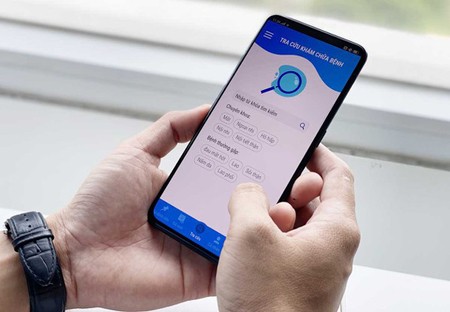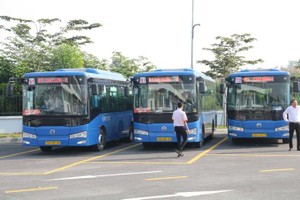
This will become the foundation for state offices, businesses, and the general public to access the database, a part of the project ‘Transforming HCMC into a Smart City’.
According to Deputy Director of the Department of Information and Communications, among the four basic pillars in the project ‘Transforming HCMC into a Smart City’, the one about developing a common database has finished the first stage after 2 years.
This database is now operating in Quang Trung Software City, resulting from the integration of several databases of different industries and state departments, including 1-stage electronic public service, complaint receipt, hotlines, business registration, foreign investment, tax payers, foreign laborers, land ownership.
“The HCMC People’s Committee held a meeting last week to collect suggestions from consultation experts, representatives of different industries, and state representatives of districts about management, operation, and exploitation methods for this common database”, said Ms. Vo Thi Trung Trinh, deputy director of the Department of Information and Communications.
Among the received recommendations are ideas about citizen information updating such as expanding data on household members (relationship to Head of Household), displaying more citizen-oriented data regarding construction and natural resources & environment. There are also voices about clear regulations on data restriction or exploitation level of each user in order to ensure necessary information confidentiality.
The Final Draft of the Integrated Regulations states that there will be four digital directories in this shared database, consisting of citizens (gender, ethnicity, blood type, marital status, address, ID number); businesses (business number, name, address, business type, capital, capital contributors, operation status, tax status); geographic location (street, ward and commune, district, province and city, nationality); management and administration procedures (list of administration procedures, state office names).
In October 2018, the HCMC People’s Committee announced the architecture of the city’s e-government. This is a comprehensive plan to direct the unified and synchronous implementation of IT in state offices to minimize repetition and financial waste, to satisfy the public’s and businesses’ practical demands, and to fulfill strategic goals when transforming HCMC into a smart one.
This architecture is developed in accordance with the architecture frame of the national e-government and strictly follows the project ‘Transforming HCMC into a Smart City in the Period from 2017 – 2020, with a Vision to 2025’. It is an intelligent preparation for the followed-up digital government to manage this smart city.
The architecture is supposed to help improve public services when focusing more on citizens and businesses. The development of a common database, therefore, is to fulfill this aim.
It is clearly stated that in 2020, the document supervision system, the electronic management, the one-stage electronic public services, the shared database on citizens as well as businesses, and the digital map are going to be basically launched.
From 2020 – 2025, HCMC is going to construct its smart electronic government based on advanced technologies like big data, open database, artificial intelligence, cloud computing. It is also planning to make good use of social networks to deliver smart public services. After 2025 is the time of customized electronic government growth when public services are automatically carrying out thanks to interactions between computers.
























